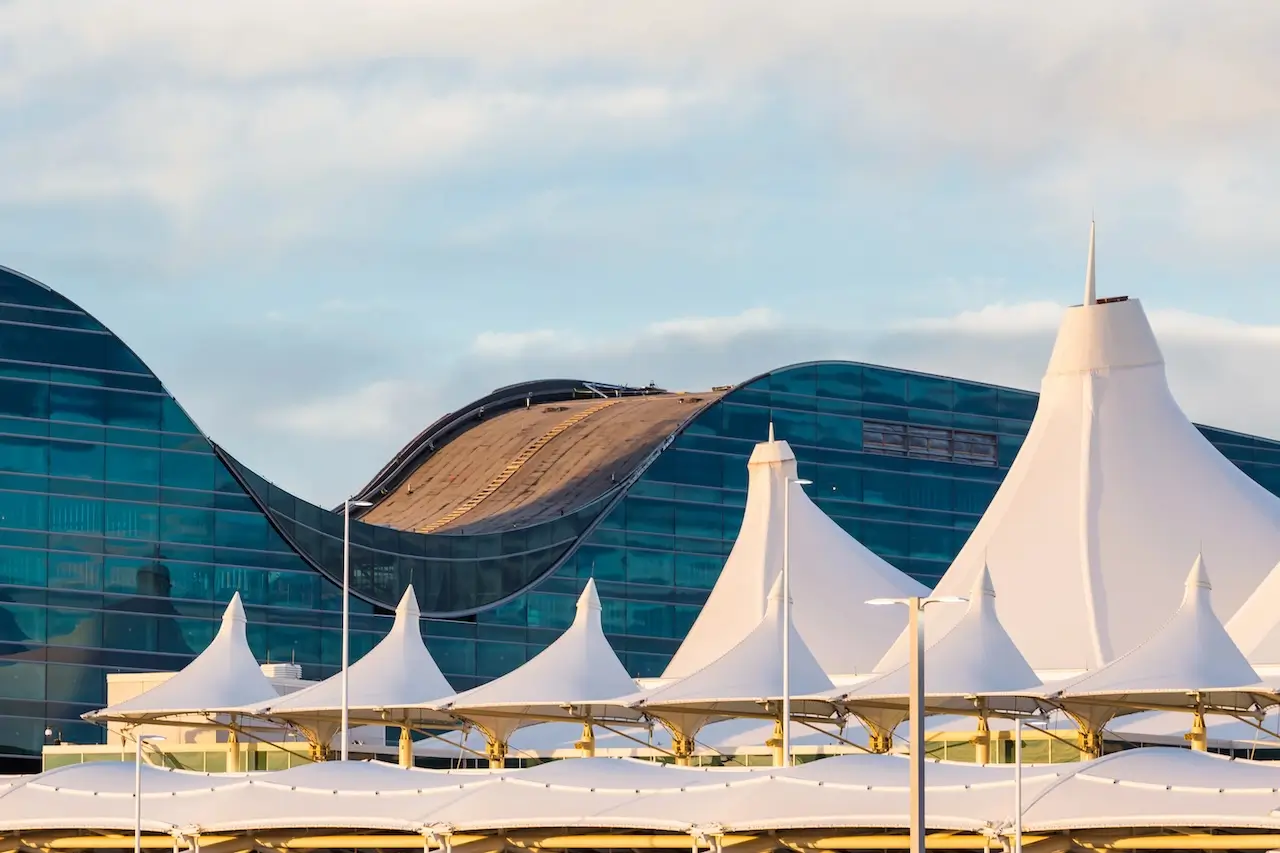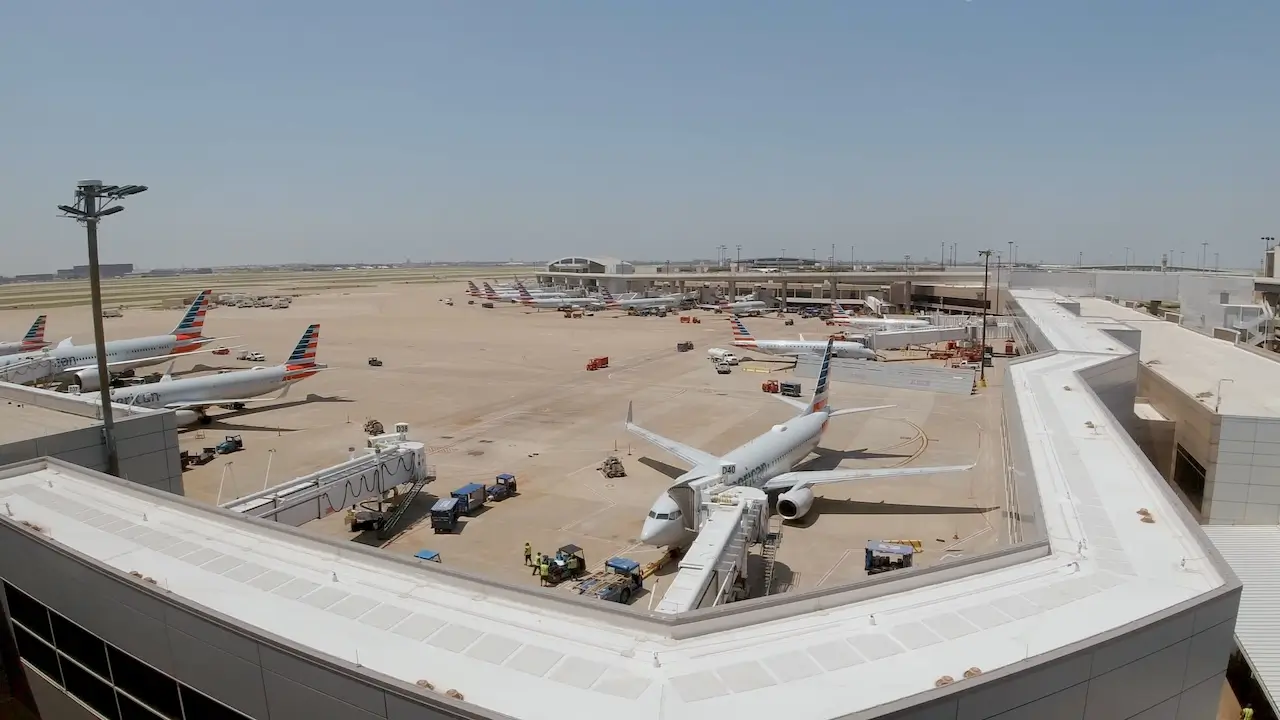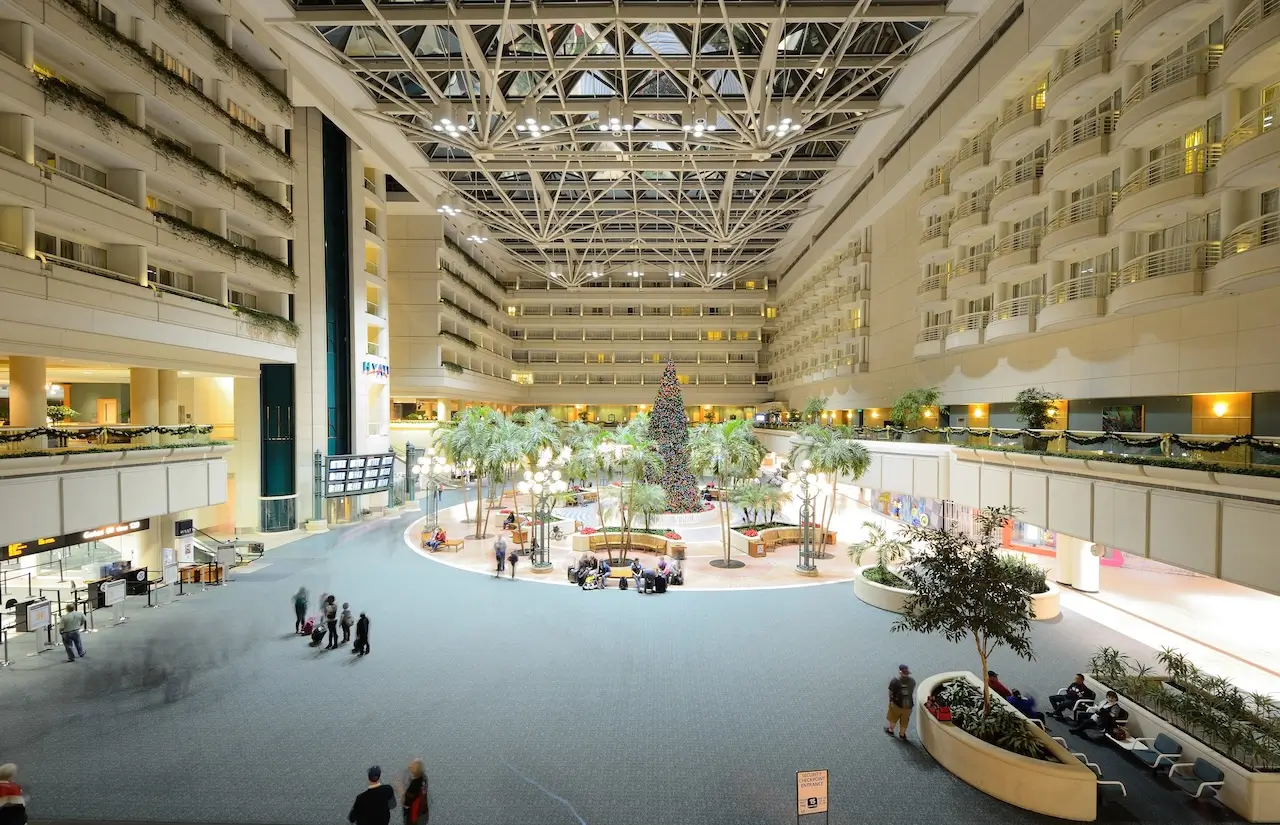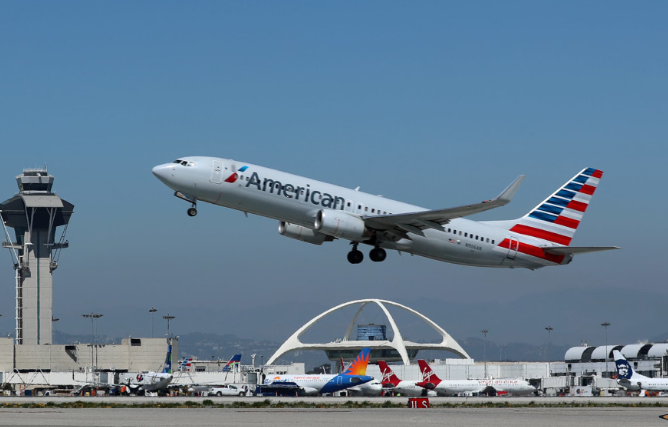1. Denver International Airport, Colorado (DEN)

| Airport Name | Denver International Airport |
| IATA Code | DIA (DEN unofficially) |
| Location | Denver, Colorado |
| Serves | Denver Metro Area and Front Range Urban Corridor |
| Hub for | Frontier Airlines, Great Lakes, United |
| Area Covered | 135.69 km 2 (52.4 sq mi) |
| Gates and Terminals | 1 terminal, 6 runways, 3 concourses, 179 gates |
| Passengers traffic | 77.8 million in 2023 |
Denver International Airport isn’t only the largest airport in the USA, it’s also the second largest airport in the world. Colossal in the sheer amount of space it occupies, DIA (or DEN as the locals call it) has six runways with one of them being the longest in the United States (for public use) at 16,000 feet. As though that weren’t, there’s enough land around the airport to accommodate another 6 runways.
Many passengers might already be familiar with the distinctive peaked roof design of the Jeppesen Terminal. Created by the Fentress Bradburn architectural group, the design was inspired by the local landscape and the towering Rocky Mountains that surround it. As the only terminal, it takes up 2.6 million square feet.
DEN is so big, serves as the main economic engine because it has generated $36.4 billion for the area each year. Plus, with over 77 million travelers passing through its gates in 2023, it’s also become the 3rd busiest airport in the United States and the 6th most traveled airport in the world.
Here are some other facts to help you get a better understanding of its size:
- Denver International Airport has more than 5,300 miles of fiber optic cables
- The airport has a fuel system that’s is capable of pumping 1,000 gallons of fuel per minute
- The fuel is stored in 6 tanks – each holding 2.73 million gallons a piece.
- Over 19 miles of conveyor belts, baggage handling vehicles, and roadway can be found in their underground tunnel
2. Dallas/Fort Worth International Airport, Texas (DFW)

| Airport Name | Dallas Fort Worth International Airport |
| IATA Code | DFW |
| Location | Dallas, Texas |
| Serves | Dallas/Fort Worth and North Texas region |
| Hub for | American Airlines |
| Area Covered | 69.63 km2 (26.9 sq mi) |
| Gates and Terminals | 5 terminals, 171 gates |
| Passengers traffic | 80 million in 2023 |
Opened in 1974, Dallas Fort Worth International Airport is the second largest airport in the US, but it is literally as big as a city and, in many ways, operates like one. It has medical departments, six police stations, dedicated emergency operations, and 6 fire departments. This airport even has its own zip code! With 7 runways, Dallas Fort Worth is the 5th busiest airport in the world and the 3rd largest in the world for operations. In 2022 alone, the airport moved 901,908 tons of cargo.
3. Orlando International Airport, Florida (MCO)

| Airport Name | Orlando International Airport |
| IATA Code | MCO |
| Location | Orlando, Florida |
| Serves | Orlando metro area and Central Florida |
| Hub for | none |
| Area Covered | 53.83 km2 (20.8 sq mi) |
| Gates and Terminals | 4 terminals, 129 gates |
| Passengers traffic | 57,735,726 in 2023 |
A Mecca for tourism, Orlando International Airport comes in as the third largest airport in the US and in North America. It originally opened as McCoy US Air Force Base in 1942, which is how it got its IATA Code, MCO, and became an international airport for public use in 1976.
This airport covers 12,264 acres, making it bigger than Los Angeles International Airport, JFK, and Miami International Airport combined. It also has 4 runways and a hub-and-spoke design. If you have a layover at MCO, you can choose from over 50 restaurants and over 150 shops including official merchandise stores for Disney, Sea World, Kennedy Space Center, and Universal Studios.
4. Washington (Dulles) International Airport, Washington, D.C. (IAD)

| Airport Name | Washington Dulles International Airport |
| IATA Code | IAD |
| Location | Dulles, Virginia |
| Serves | Washington, D.C. metro and Baltimore metro areas |
| Hub for | none |
| Area Covered | 52.6 km2 (20.3 sq mi) |
| Gates and Terminals | 5 concourses, 113 gates |
| Passengers traffic | 25.1 million in 2023 |
Our fourth largest airport is Dulles, located a convenient 26 miles outside the nation’s capital. With its modernist architecture designed by Eero Saarinen, IAD opened in 1962 and covers more than 10,000 acres across two counties in Virginia. Interestingly, Dulles was the first airport created to meet the needs of commercial aircraft, and its design was chosen to represent the “jet age”.
To get around, passengers can hop on the airport’s transit system called the AeroTrain that connects the A, B, and C Concourses, or you can be delivered to your terminal on one of Dulles’ mobile lounges. A throwback to the 1960s, these 17 and a half foot tall bus-like vehicles can carry more than 100 travelers at a time.
5. George Bush Intercontinental Airport, Houston, TX (IAH)

| Airport Name | George Bush Intercontinental Airport |
| IATA Code | IAH |
| Location | Houston, Texas |
| Serves | Greater Houston Metro Area |
| Hub for | United Airlines |
| Area Covered | 40 km2 (15.44 sq mi) |
| Gates and Terminals | 5 terminals, 131 gates |
| Passengers traffic | 46.1 million in 2023 |
Located roughly 23 miles outside downtown Houston, IAH is United’s 2nd largest hub in the country as well as a focus city for Spirit Airlines. When it opened in 1969, it was called Houston International Airport, which is where It got its IATA Code. It was renamed in 1997 after the first President Bush.
Covering over 10,000 acres with 5 runways, IAH was the 15th busiest airport in the nation last year. If you need to kill some time while you’re there, you can browse one of the biggest public collections of art in the state and enjoy some live music thanks to its “Harmony in the Air” series that brings musical performances to all the terminals.
